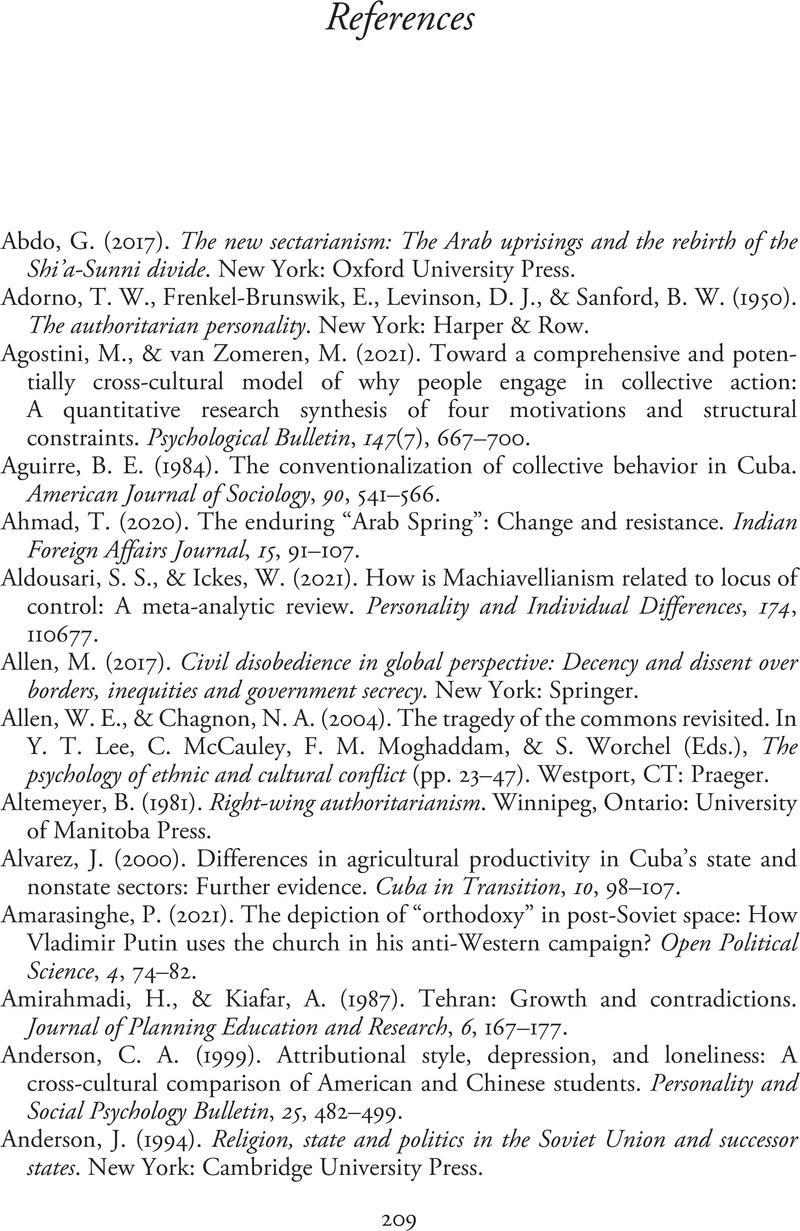Book contents
- The Psychology of Revolution
- The Progressive Psychology Book Series
- The Psychology of Revolution
- Copyright page
- Dedication
- Epigraph
- Contents
- Figures
- Preface
- Acknowledgments
- Chapter 1 A Psychological Perspective on the Puzzle of Revolution
- Part I Getting to Revolutionary Collective Action
- Part II Regime Change
- Part III What Happens after Revolutionary Regime Change?
- Part IV Reevaluating Revolutions
- Afterword: Revolutions as Acts of Collective Creativity
- Notes
- References
- Index
- References
References
Published online by Cambridge University Press: 07 March 2024
- The Psychology of Revolution
- The Progressive Psychology Book Series
- The Psychology of Revolution
- Copyright page
- Dedication
- Epigraph
- Contents
- Figures
- Preface
- Acknowledgments
- Chapter 1 A Psychological Perspective on the Puzzle of Revolution
- Part I Getting to Revolutionary Collective Action
- Part II Regime Change
- Part III What Happens after Revolutionary Regime Change?
- Part IV Reevaluating Revolutions
- Afterword: Revolutions as Acts of Collective Creativity
- Notes
- References
- Index
- References
Summary

- Type
- Chapter
- Information
- The Psychology of Revolution , pp. 209 - 231Publisher: Cambridge University PressPrint publication year: 2024



